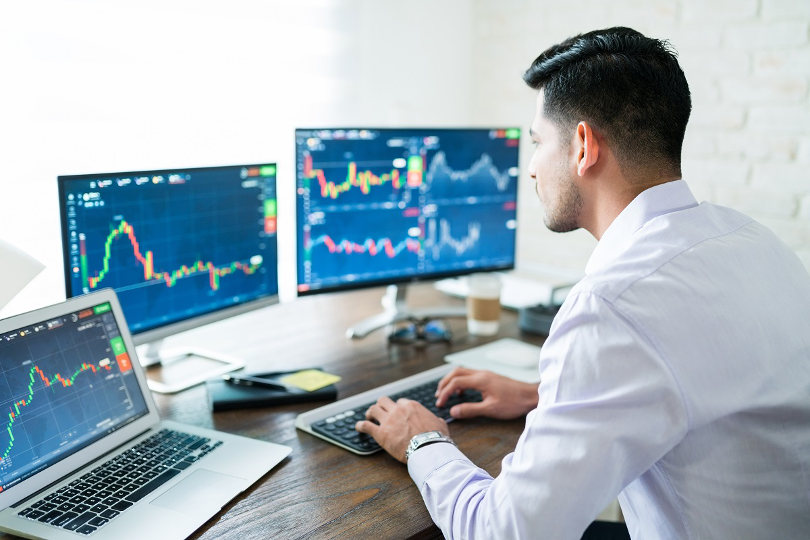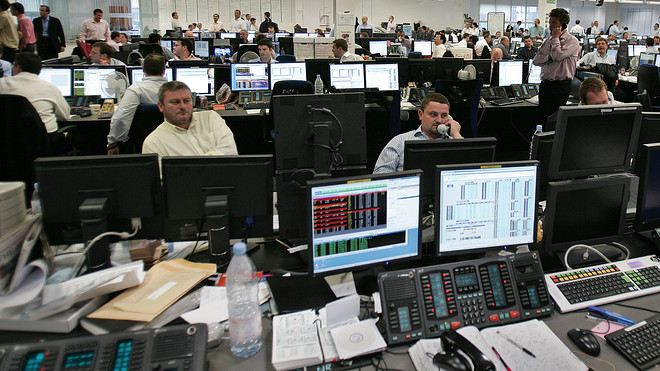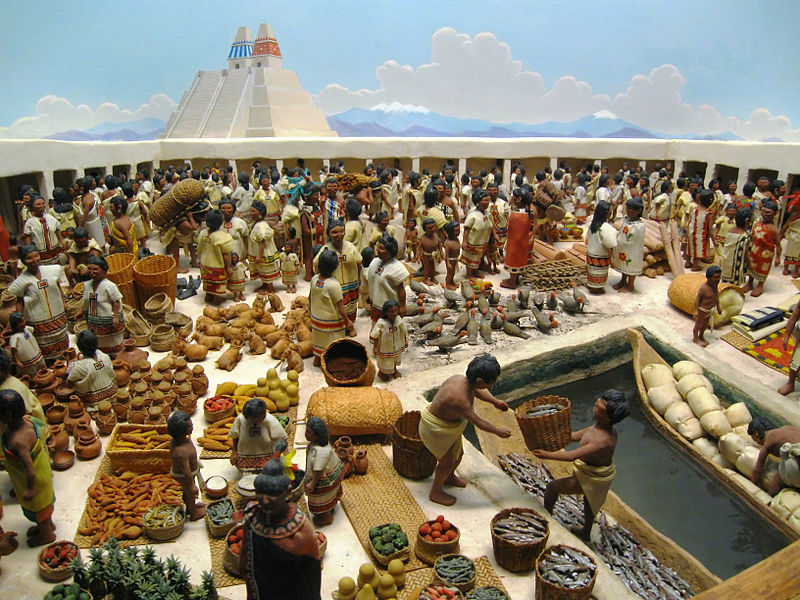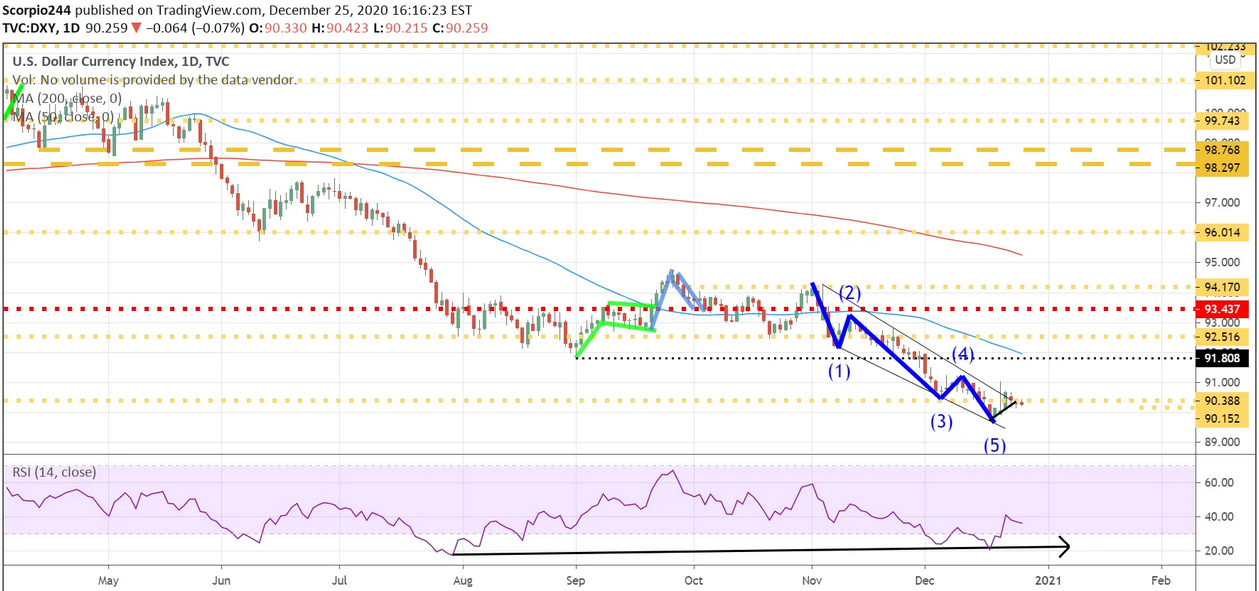Mass Psychology in Stock Trading
A comprehensive guide to stock trading psychology, mechanism and terminologies.
Author:James PierceReviewer:Camilo WoodMar 18, 20212.1K Shares426.7K Views
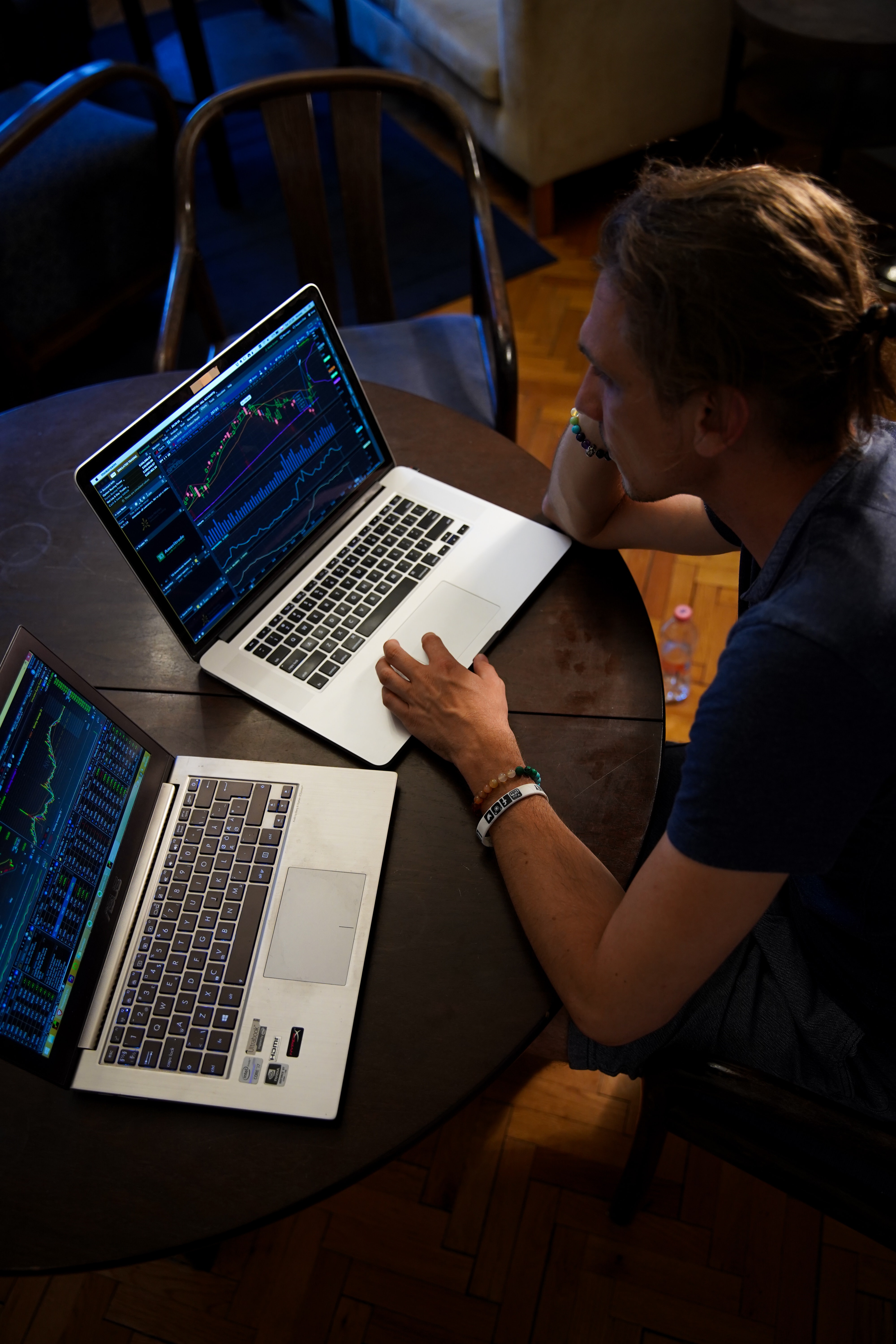
Wall Streetis named after a wall that keeps farm animals from wandering around the streets of the Southern tip of Manhattan. There are four animals that are always mentioned on Wall Street - the bulls, bears, hogs, and sheep. The characteristics of these animals symbolize four different types of traders.
Bulls represent buyers who wager on a rally and gains from a rise in prices. Bears represent sellers who wager on a decline and gain from a fall in prices. Hogs are greedy traders who buy or sell their positions that are not at par with their accounts. Sheep are hesitant traders and fearful followers.
When the market opens, bulls buy, bears sell, while hogs and sheep are crushed down.
Prices: Ask And Bid
Naturally, buyers would always bargain for a lower price. Sellers, on the other hand, would charge as much as they could. 'Ask' is what a seller demands for his products, while 'Bid' is what the buyers are willing to exchange for the product.
A successful trade takes place when two minds meet halfway: an eager bull agrees to a seller's terms and pays up, or an eager bear agrees to a buyer's terms and sells a little cheaper.
Now, there's a third party lurking around - the undecided traders. The buyer knows that if he decides too long another buyer will come ahead of him. Similarly, a seller knows that if he waits too long for the price to go up, other sellers might enter the competition and set a lower price.
Bulls and bears are pressured to move fast because undecided traders might interfere and steal their deals.
Who Create The Price?
Buyers buy when they foresee prices to rise in no time. Sellers sell because they anticipate prices to fall. Bulls push the market up while bears pull it down. And the presence of undecided traders hastens them to make a decision.
Hence, prices are created by these three groups: the buyers, the sellers, and the undecided party. Each price shows a consensus of value of traders all over the world at the moment.
The patterns of prices are depicted by the ticks on your screen. Collectively, these deals between a bull and a bear, influenced by the urgency created by the undecided traders, reflect the mass psychology of the market.
Trading Behavioral Patterns
A crowd of traderscauses the changing patterns on your screen. They create an ever-shifting consensus formed in an easy-going environment. However, this environment can go wild at any time. During quiet moments, prices gradually rise. Now, how does a wise trader react to this instability?
Amateurs are inconsistent. They tend to enter impulsively when prices are running but grow inattentive when prices stagnate. Contrarily, wise traders are patient. They enter the market when it is quiet and profit in wild times.
Each trading session is a battle between bulls and bears. A thoughtful technical analyst determines the controlling balance of bulls and bears to ascertain a winning bet. Meaning, if the bulls are powerful, you should buy and hold. When the bears are in control, you should sell and sell short. When they are equal in power, then wait.
Technical analysis in tradingis science and art. It is scientific because it entails statistical methods and technology. It is an art because it entails personal discernment when interpreting data.
Market: The World Of Traders
Your perception of the marketreveals what kind of trader you are. How do you perceive patterns, numbers, or graphs?
Traders can be classified into three groups - amateurs, technical, and experienced/professional. Amateurs treat the market as a grandiose banquet where they can rub shoulders with wealthy people and make money. Technical and scientific traders synthesize sounds, images, scientific measurements, and other signals since they perceive the marker as a physical world. Experienced traders view the market as a crowd.
This crowd is composed of countless people from across continents brought together by technology. The rule of the game is to outsmart all the others and accurately predict the direction of the market.
The market is a money world - everything is about money! When you enter, you pay; when you exit, you pay. And there are prowling brokers waiting for their commission the moment you place your bid.
You can't laze your way into trading. You should be wary and keep commission sharks at bay as you fight against the smartest people in the world. This is a place for the brave and gutsy.
Moreover,
Global Traders
Back in the old days, the markets were small-scale, and everybody mostly knew each other. Now, international traders are connected to the market electronically. They become members of the market crowd even though they are scattered all around the globe.
Modern telecommunications have drawn the world closer. Traders must understand the laws that govern crowd behavior to see how the market moves. So, in analyzing the market, differing cultures must be considered as a strong influence on crowd behavior.
Think For Yourself
Do not run with the crowd. A successful trader thinks independently and carries out trading decisions all from his own judgment. However, this doesn't mean at all that you should run against the crowd. It may be simple-minded but it's powerful enough to create the trend. If you want to gain money from crowd members, respect the crowd, be independent, and think for yourself!
Market Money
The source of moneyin the markets is the traders. Everybody puts in money while trying to take what everybody else drops. Winning means you have successfully taken money from others as you dealt with hungry brokers and traders.
Modern trading is comparable to medieval battles. Taking money from a man is like taking his life. He may lose everything, including his family's future. The market is the battlefield, and there are so many easy preys for hostile predators to devour.
The majority of brokers are unprepared and unknowledgeable like sheep ready for slaughter. This is advantageous for the more experienced; however, once the sheep figured out what he needed to do, it's going to be a hard fight.
One thing is sure, the privilege gets paid as you enter and leave the battlefield. They get rich whether you come out as a proud winner or a wounded loser.
Insiders
Technical analysts play fair; they work hard to gather and interpret data. But there's a group of people called corporate insiderswho earn from inside information. They make steady profits in the stock market. To a certain extent, these are legitimate profits. However, others get so greedy that they cross legal lines and steal megabucks from the markert.
It triggers suspicions leading to an investigation through insider trials. Those who are prosecuted and proven guilty are incarcerated. Insider trading is justifiable insofar as each member do not disregard established rules.
This kind of trading is also reflected on the market charts just like all other tradings. Technical analysts help expose insider transactions.
Trading: Then And Now
Trading is already practiced since the dawn of history. Money became the medium for the exchange of merchandise. Stock and commodity exchange commenced the advancement and economic developments of countries. Way back, trading takes days to take place; today, it only takes seconds to place an order from the sellers. Location, rules for grading merchandise, and defined contract terms are the criteria before trading happens.
Meet The Individual Traders
Most private traders came from successful business ventures and or professions such as farming and engineering. They trade to gain a massive amount of capital, and they also unintentionally gamble on trade for excitement's sake. Trading is a long and tiring field to learn, but some become successful. The main economic role of a trader is to give support to his broker. While the role of a speculator is to help companies make capital and let their producers focus on production.
Who Are The Institutional Traders?
Institutions make huge amounts of trading as they pay low commissions and can hire the best researchers and traders. They can also afford to have intelligence networks that provide them information yet to be made public. As a result, they are much ahead of other traders. Institutional tradersfrom firms have inside information and are exempted from limits in futures markets by speculative positions.
Young traders are advised to seek a job with a trading nature since their money will be secured in this setting. However, institutional traders have a weakness; they HAVE to trade and be active in the market at any price. Private traders take advantage of this loophole as their goal is to trade well and not trade often.
Some institutional traders manage to get out of the firms and trade on their own. But they encounter psychological problems since they are now risking their own money and managing it on their own.
Trading Tools
Good software and low commission rates make a useful tool for trading since computers open you to a wide array of market information. Toolboxes, black boxes, and gray boxesare some software that traders could use. The toolbox allows you to show data, create charts, identify indicators, change their parameters, and test the trading system. The black box allows you to input data, and it will show you what and when to buy and sell. In comparison, Gray boxes disclose the overall logic of their system and make you adjust their parameters. Another one is Stockcharts.com; it has plenty of features for traders.
Advisors
Advisory newsletters provide ideas about the possible direction of the market for trading. Some of them provide educational value, while some pose as insider information. However, suggestions from newsletters aren't really patronized, despite having good potential for trading success. Newsletter's principle is to have a lot of forecasts in order for some to turn outright.
YOU In The Market
Markets are composed of a not so organized crowd who hopes for prices to rise or fall. Traders bet on the future trend that the crowd will be up for. Most of them don't follow their trading plans since crowd behavior changes drastically anytime, and it clouds their judgment. As the buyers and sellers battle in the market, the value of open positions is affected by other people since the market is uncontrollable; you can only either swim or drown.
Gurus Of Old
In 1841, Charles Mackaydescribed the beginning of the tulip craze as a bull market in tulip bulbs. The crowd has gone crazy with tulips as they are convinced that it will continue to be profitable. But the tulip mania fades as they get back to their senses, leaving the people and country in economic distress. In 1897, Gustave Lebonwrote that people, whatever differences they have, all share the same feelings, thinking, and actions when they are gathered into a crowd. People's way of thinking changes when they are in a crowd; they think less and act more on emotions.
Joining The Crowd
In prehistoric times, people join crowds for safety. They join groups to survive because they are more powerful when they are in large numbers. Every individual's financial status is at risk because of buying and selling that affects the value of a position. The uncertainty of the prices makes the traders look for people who could manage them. But now, traders lose their independence when they start being impulsive and listen more to gurus than their own thoughts. You have to get out of this trap and regain your composure.
Crowd Mentality
People who join the crowd feel positive feelings more than when they were in on their own. However, they could be more prone to impulsiveness. Independent tradersplay cool as they trade at their own pace, but after being influenced by mass hysteria, their trading decisions become unwise, and their chance for success becomes blurry. Becoming one with the crowd mostly doesn't favor traders. The crowd's mentality is basic, but it is much stronger and bigger than independent traders. But for individual traders to become successful, they have to follow their trading plans and manage their money on their own without imitating others. This is a sign of independence.
Who Leads?
Traders, especially beginners, are easily influenced by the sudden change in the prices. When it doesn't go in their favor, they panic and resort to joining the crowd and lose their independence. Market leaders such as trading system vendors, newspaper columnists, and teachers could influence any trader what to think and do. But the price will remain as the main leader of the market, as stated by Tony Plummer. The price will indicate whether the traders will gain profit or not, so they follow as its movement drastically affects their financial stability.
Becoming Independent
Planning your trades will keep you from being impulsive when the price changes. Planning under what condition you should enter and exit trade will keep you from making irrelevant decisions; write your reasons for entering a trade and the rules that will signal your exit. Success in trading mostly depends on the trader's plans that he established by himself. Your own plans are made from your own rational thinking. You have to focus on your survival plan and save yourself from impulsive decisions.
Finding A Good Group
A trader could also be successful despite belonging to a group as long as it is powered by intelligence and productivity. James Surowieckidescribed a positive group in which the members do not emotionally influence each other. An intelligent group is composed of members who make decisions apart from others independently. However, they all combine their knowledge and expertise. A group leader is present and is responsible for maintaining their structure and initiates voting of individual decisions. Decisions on the stock selection and direction are made independently by the members, and the sharing only begins after votes have been cast out. This results in the collective wisdom of the group and not mere emotion-based decisions.
Psychology Of Trends
The consensus of value among the market participants represents the price that is up at the moment. Each price bar commences the battle of buyers and sellers; the buyers purchase and raise the market, while the sellers' merchandise and push the markets down. Analyzing the charts using the technical indicators will tell you more about market behavior.
Mind Over Feelings
Shares and futures contracts are always bought and sold equally because someone has to sell it to you when you buy a share. Also, the numbers of long and short positions are always equal since prices change based on the changes among the market participants. Buyers buy even if the price is high because they expect it could get higher. While sellers only sell at a higher price. Market rally emerges when the greedy buyers interact with the fearful sellers, and it only ends when the buyers lose their emotion over the trend. When prices slide, the buyers only buy at a discount, while the sellers sell at lower prices.
Fear And Greed
Most of the market participants get easily influenced by the emotions in the market. There are also few who are considered rational traders. The rally sharpens when the buyers slightly dominate the sellers, which results in the rise of the market. Sellers lose their profits when rallies happen. The market falls when the buyers are fearful while the sellers are greedy. The buyers would buy only below the market. The sellers are up for this so that the decline will continue. The market drops when the buyers lose their profit and would sell at any price.
A Price Shock
Since the price acts as the leader of a market crowd, traders must be loyal to their leader; because it could reward them when the price moves in their favor or punish them when it goes otherwise. When the buyers make money, they add to long positions. In contrast, the sellers sell short because of more buyers coming into the market.
They cover their shorts, go long, and join the buyers. The emotional involvement of the market participants creates the rise of the trend and sets up their own leader. This leads to a major hit in sales or a price shock. A price shock will later make a reversal in the uptrend. And even if the market recovers, the sellers will just become much bolder.
The sellers are magnified and praised in their market, while the buyers lose their money caused by the downtrend. But a price shock could occur again, reversing the downtrend, and the buyers become the bolder one. The sellers could trace their weaknesses through a pattern called bullish divergence, which could trace shallower bottom from the previous downtrend.
Social Psychology
Group behavior is repetitive and easy to track, while individual behaviors are difficult to foresee. Analyzing markets always includes the group behaviors, the direction they are heading, and the changes in their movement rate. However, analysts could be easily influenced by the group's emotional pull. The longer a rally or decline continues, the more analysts will be caught up in the group behaviors.
This is why planning the analysis of markets is essential in order to have indicators and how to interpret and act upon it. Traders such as floor tradersuse special tools to study crowd behavior. The analyst acts as an applied social psychologist that can utilize the charts and indicators that reflect the way of thinking of the crowd.
Are Predictions Reliable?
There are traders who follow their guts when having trading decisions. Fundamental analysisand technical analysis are two alternatives to gut feeling. Fundamental analysts study the movements done by the Federal Reserve, follow and examine reports, and such. Market participants reflect actual changes in supply and demand.
However, you could still lose your money if you will not consider the intermediate and short-term trends that largely depend on the emotion of the crowd. Technical analysts focus on the prices as it indicates everything that happens in the market and the market participants. This analysis studies mass psychology, divided into science and art. Science because they use computers in tracking indicators, and art because the changes in the price bars make a flow and rhythm, tension, and beauty used to see market activities and how to trade.
Technical Analysis
Technical analysisis somehow similar to political poll-taking since both aim to read the intentions of the crowd. This method is mainly used for financial gain amidst the battle in the market. Poll-taking, just like technical analysis, is both science and art with no party affiliations.
A technical analyst must not have a bias between buyers and sellers. To see if there are any biases in their analysis, they could turn the chart upside down. When aiming for a buy, analyze the flipped chart, and see if it looks like a sell. If it still indicates a buy, then this is a buyer bias in your system that you must work out. And if both the normal and flipped chart shows a sell, then there are seller biases.
Predicting Wisely
Traders should be able to forecastfuture prices. A professional trader makes a prediction all by himself through probabilities from his managed information. Contrarily, amateurs look for forecasts. Making money in trading doesn't require you to get a forecast of future prices. The wise thing to do is take data from the market and determine whether bulls or bears are in control. You have to assess the situation and figure out how long the trend will continue.
For instance, if you’re like the many people currently taking to crypto trading, it’s beneficial to have crypto savings accountto help you make more thoughtful decisions to protect your investment. Each day is filled with several news bulletins about cryptocurrencies, and with the current market correction, the industry remains in a volatile state. However, nobody seems to know precisely the issue, and solutions are still distant. Therefore, it’s helpful to take practical steps to secure your wallet and grow your crypto faster. First, have a motive for every market, establish a profit target, utilize stop losses, manage your risks, and avoid buying because prices are low. The goal is your money's long-term survival and profit gain in the trading process. This method is more effective than depending on advisory forecasts.
A Good Bet
As the battle between sellers and buyers continues, there is a flooding of market information to which a trader should analyze and bet on the winning market participant. Dramatic forecasts about the market could dismantle the plans a trader has already established. Such predictionsare made to attract attention to raise or sell their services, but they aren't that useful. You have to depend on your own thinking to independently analyze market information.
You could make actual comparisons from the developments in the market, as it could help you weigh things down to what is more beneficial for you. To be successful in trading, you have to analyze the power of the market participants, practice good money management, and be disciplined in following trading plans.
The best Quicken competitorsallow you to track all your income, investments and spending in one place. Good money management skills will help you to set the boundaries for successful trading and keep within your limits when it comes to how much you can realistically afford to invest and keep abreast of your cash flow situation.
Reminders
- There is always room for a buyer and a seller in the market.
- According to Prof. Daniel Kahneman, Fear is three times stronger than greed.

James Pierce
Author

Camilo Wood
Reviewer
Latest Articles
Popular Articles
